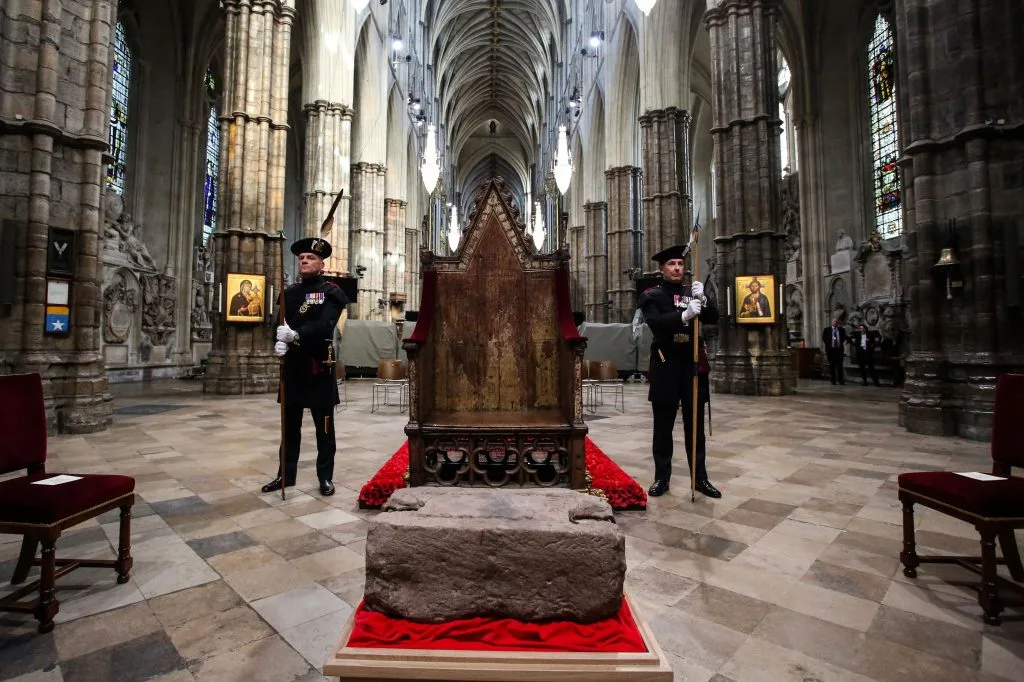Mysterious New Markings Have Appeared on the U.K.’s Ancient Stone of Destiny
Forget the crowning; the anointing is the most sacred moment in the coronation of British monarchs—so much so, it’s shielded from view by a three-panel screen. And when Charles III is dabbled with oil blessed by the Orthodox Patriarch of Jerusalem on May 6, he will sit on a rickety chair custom-built in 1300, underneath of which will be placed the Stone of Destiny.

The Stone of Destiny, or Stone of Scone, is a 335-pound oblong of sandstone that has been used in royal coronations since the 14th century, yet remains shrouded in mystery.
Twice stolen, first by King Edward in 1296 and later by Scottish students in 1950, the stone is an ancient symbol of Scotland’s monarchy, with legend tracing it back 3,000 years to Palestine.
That provenance has long been debunked by scientists and ahead of the coronation, the Stone of Destiny has undergone further assessments by Historic Environment Scotland (HES), which looks after the stone under Royal Warrant. The research was conducted at the Engine Shed, a conservation center in Scotland.

In the process of creating a new digital 3D model of the stone, researchers discovered never-before-noticed markings and anomalies. Tooling marks on the stone’s surface show it was worked by more than one stonemason with various tools.
Less expected, were a trio of Xs and a V carved into the stone that appear similar to Roman numerals, though some scholars believe them to be rudimentary crosses.
In addition, X-ray fluorescence (XRF) analysis revealed traces of a copper alloy on top of the stone, ones which overlap with a dark stain.
It’s thought to be evidence of a copper or brass object, potentially a relic such as a saint’s bell, resting on the stone for an extensive period of time.
Researchers also found microscopic traces of gypsum plaster among the pores of the sandstone, suggesting a plaster cast was at one point made. There are no archival records of a replica ever being made.


“It’s very exciting to discover new information about an object as unique and important to Scotland’s history as the Stone of Destiny,” said Ewan Hyslop, the head of research at HES.
“We may not have all the answers at this stage, but what we’ve been able to uncover is testament to a variety of uses in the Stone’s long history and contributes to its provenance and authenticity.”
HES is intimately involved in the coronation. It has created a bespoke container to ensure the stone’s safe passage to and from London’s Westminster Abbey.
After the coronation, the Destiny Stone will return to Edinburgh Castle before moving to the new Perth Museum in 2024.




